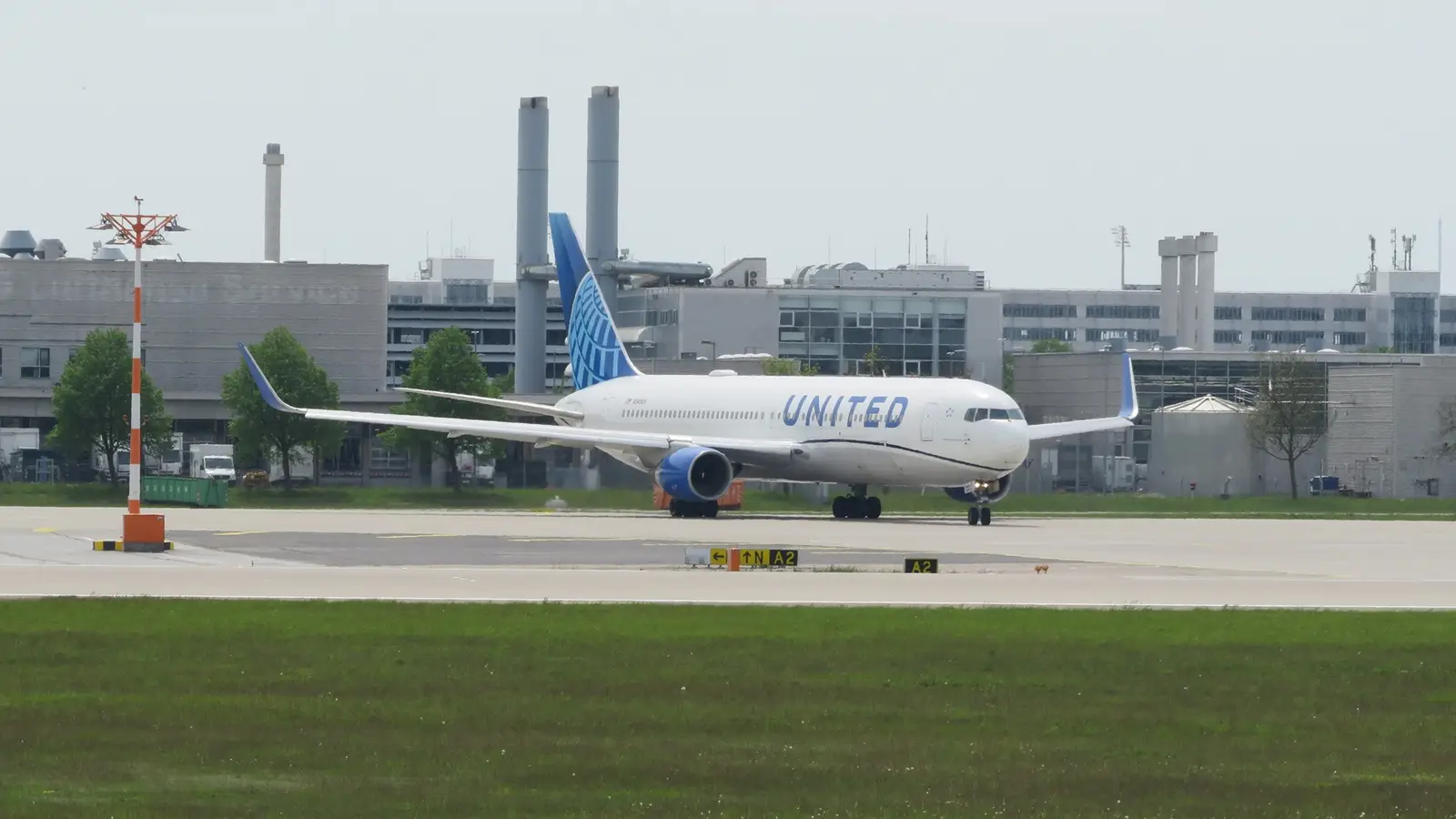
Over the past decade, airlines have put more focus on premium cabins as a way to strengthen revenue. Economy fares have become less reliable as a profit driver, and markets on both sides of the Atlantic and Pacific have faced oversaturation. Carriers have responded by investing in more business-class seats, launching new premium economy products, and upgrading service standards to capture travelers willing to pay more for comfort.
For instance, American Airlines is bringing its new Flagship Suite to the 777-300ER, the A321XLR, and the 787. Even low-cost carriers such as Frontier, Spirit, and Southwest have moved to add extra comfort options. United Airlines has taken a similar path and reconfigured its 767-300ERs, which were long due for refurbishment. It has introduced a premium-heavy configuration across most of its fleet.
United Has A Long History With The Boeing 767-300ER
United has flown the Boeing 767-300ER for over three decades. The first aircraft joined the fleet on April 18, 1991, at a time when twin-engine widebodies were reshaping long-haul flying. Over the following decade, the airline took delivery of more than 30 frames, all powered by Pratt & Whitney PW4000 engines. The type replaced older trijets and earlier-generation widebodies, giving it lower operating costs and the range needed to expand services across the Atlantic and Pacific.
It quickly became central to the carrier’s routes from Chicago and San Francisco to Europe and Asia, and offered flexibility in both range and payload. At its peak, the 767-300ER accounted for about one-fifth of United’s widebody capacity. Today, the Star Alliance member operates a fleet of 37 767-300ERs. According to aeroLOPA, these aircraft are split across two cabin layouts. 24 of them are fitted in a lower-density but premium-heavy configuration, seating 167 passengers.
This features 46 Polaris business class pods, 22 Premium Plus recliners, 43 Economy Plus seats, and 56 economy seats. The remaining 13 are in a denser 214-seat layout with 30 Polaris pods, 46 Economy Plus seats, and 138 economy seats. The airline chose to move ahead with the 767-300ER’s refurbishment project to bring the type in line with the rest of the fleet and to boost revenue at the front of the cabin, where higher-yielding seats can offset weaker returns from economy.
United’s Top Cabin: Polaris Business Class
United’s Polaris cabin is the highest class of service the airline offers and is its flagship long-haul product. On the 767-300ER, the Polaris section runs from seats 1A through 18L in a 1-1-1 layout, with a total of 46 seats. Each seat is based on the Safran Optima platform, which gives passengers direct aisle access and a fully flat bed measuring six feet six inches when extended. Seat pitch is 77 inches, width is 20.6 inches, and bulkhead rows come with slightly larger footwells.
All seats feature a 16-inch HD touchscreen, universal power outlets, and USB ports. In addition, United has added details to Polaris that go beyond the seat itself. In addition, United has added details to Polaris that go beyond the seat itself. The airline offers amenity kits designed by Therabody, which include skincare items, earplugs, and an eye mask. It has also partnered with Saks Fifth Avenue to provide a Saks Day Blanket, a duvet, and a cooling gel pillow.
Besides, United offers premium dining options. The first meal is served after takeoff with an appetizer, salad, bread, and a main course, followed by its signature ice cream sundae. A second meal service is offered later in the flight, with snacks available in between. Notably, the carrier recently introduced new dishware in the premium cabins, although many frequent flyers believe the food itself still has room for improvement.
Furthermore, booking Polaris also comes with advantages beyond the seat and service onboard. Passengers gain access to the United Polaris lounge, which is referred to by some as an upgraded lounge from the standard United Club. These are currently available at Chicago O’Hare, Houston, Washington Dulles, San Francisco, Newark, and Los Angeles. At other airports, Polaris travelers can use a United Club or a Star Alliance partner lounge.
Premium Plus: United’s Premium Economy Option
Just behind Polaris, United offers its Premium Plus cabin. This is the airline’s premium economy product, which was introduced in 2019. It was the last of the ‘Big Three’ US carriers to add a cabin in this segment. At the launch, United’s Chief Commercial Officer Andrew Nocella said that “United Premium Plus includes some of our high-end amenities from United Polaris, and is the perfect option for someone who wants an upgraded experience in the Economy cabin.”
On the 767-300ER, Premium Plus runs from rows 20A through 23L in a 2–2–2 layout with 22 Collins Aerospace MiQ seats. The cabin is separated from both Polaris and Economy by partitions and marked with a Premium Plus sign at the front bulkhead. Each seat is 18.7 inches wide, offers 38 inches of pitch, and reclines up to six inches.
In addition, it features adjustable leg rest and footrest, a 13-inch HD touchscreen, moveable armrests (on aisle seats), and both AC and USB power outlets. Premium Plus is technically still part of the economy class, but it is designed to feel different. Passengers in this class receive upgraded amenities such as a blanket and an amenity kit, along with complimentary meals and alcohol.
United Economy Plus & Economy On The 767-300ER
Furthermore, behind Premium Plus, the rest of the 767-300ER is divided between Economy Plus and standard economy. These two options share the same basic seat design, but Economy Plus provides extra legroom and sits toward the front of the cabin or in exit rows. For many travelers, it offers a middle ground between regular economy and the more premium cabins further forward.
On the aircraft, Economy Plus covers rows 31A–31L, 32A–40B, and 32K–40L in a 2–3–2 layout. The section has 43 seats, each 18.5 inches wide with 34 inches of pitch and up to four inches of recline. In addition, aisle seats have movable armrests, and every seat includes a nine-inch HD touchscreen and AC power.
Standard economy makes up the remainder of the cabin with 56 seats in the same 2–3–2 layout. These measure 18.5 inches wide with 31 inches of pitch, although rows 43AB and 44AB are exceptions, offering 43 inches of pitch, more recline, and extendable leg rests. Like Economy Plus, all seats have movable armrests, a nine-inch HD screen, and AC power.
Where Will United Fly Its Premium 767-300ERs In October?
The 767-300ER features the highest proportion of premium seats on any widebody in United’s fleet, and has been the backbone of its long-haul network for decades, particularly on transatlantic routes. According to scheduling data from Cirium, an aviation analytics company, the airline is set to operate more than 1,000 flights with these aircraft next month. Newark to London Heathrow sees the highest deployment, with up to seven daily departures in each direction.
This was among the first city pairs to see the premium-heavy layout and continues to be its most frequent deployment. Chicago O’Hare to London Heathrow also features prominently, with three daily departures, while Newark to Naples will see two daily flights in each direction. Despite their continued importance, the 767-300ERs are approaching the end of their careers. The average age of the fleet is around 29.6 years old, and United plans to retire all of them by 2027.
The rationale is simple: the aircraft no longer fit with the airline’s goals of reducing emissions, lowering operating costs, and offering quieter cabins with upgraded amenities. The aircraft’s maintenance needs are increasing, and newer types such as the Boeing 787 have overtaken the 767 in efficiency and passenger appeal. Until their retirement, however, the 767-300ERs will continue to carry a large share of United’s premium traffic across the Atlantic and elsewhere.
The 767’s Place In United’s Premium Futur
Air travel demand is consistently growing, and airlines are increasingly focusing on enhancing their products to remain competitive. Premium cabins have become one of the defining features of this shift, not only as a way to attract passengers but also as a major driver of revenue. For many carriers, including United, investments in business class, premium economy, and upgraded service standards have proven more reliable.
The 767-300ER shows how this strategy has played out in practice. By refurbishing the fleet with more premium seating, United has been able to deploy the aircraft on high-demand transatlantic routes while aligning with changing passenger expectations. Its role has been less about capacity and more about yield, filling cabins where travelers are willing to pay for comfort.



